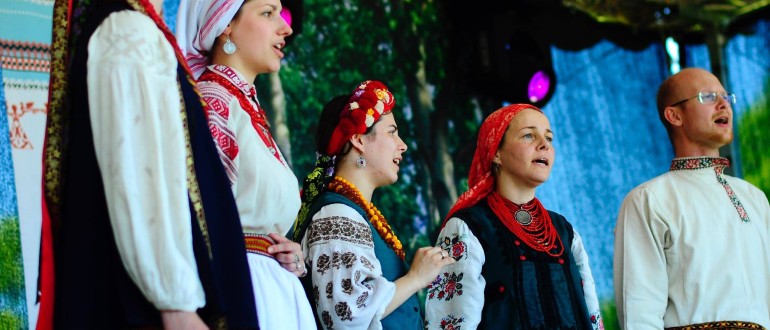Most Romanian traditional vocal music is monophonic (solo or unison), although there are some “rudimentary forms of heterophony and polyphony” in some regions in some p ains sung by girls during evening working parties (Bihor); and children’s songs connected to different dance-games, found all over the country” (Apan, 2000:879). the most developed traditions of polyphonic singing in Romania. Their songs are always performed by two groups in antiphon, either in unison or in polyphony. G. Marcu distinguishes two vocal polyphonic styles among Macedonians in Romania: the first one is connected to “Pinderi” (Macedonians from the Pindul mountains) a Gramusteni” (mostly from Epir – northern Greece), and the second one is connected to “Farsheroti”, a shepherd population from North Greece and the Albanian district of Corcea. In the first style most of the singers sing the main tune in unison (or heterophonic) style. The rest sing the second part (often the drone). In both styles t ation of parts is often based on dissonant “barbarian” intervals (Dumitrescu, 1977:12).





